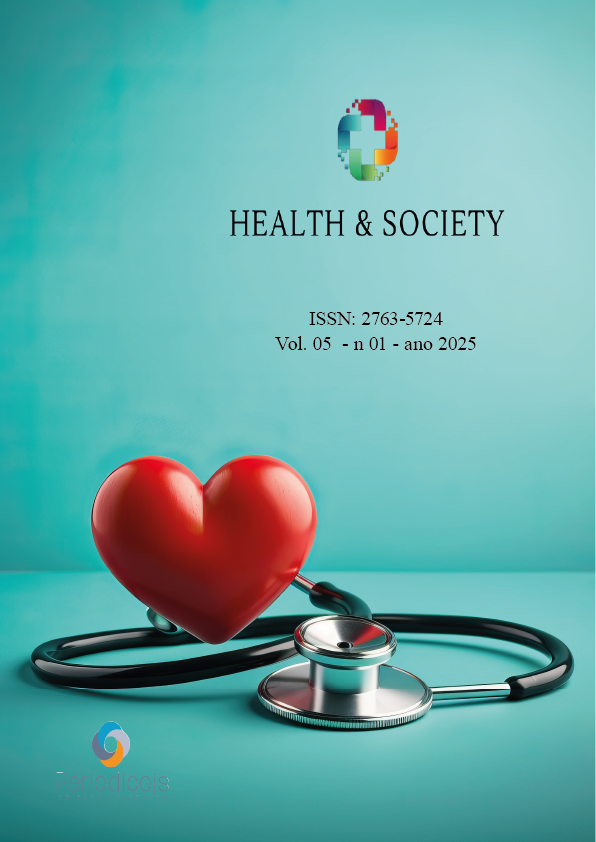Abstract
Neuromuscular monitoring during general anaesthesia is a crucial practice for the proper management of muscle blocks, allowing the dosage of muscle relaxants to be optimized and adverse effects to be minimized. The use of neuromuscular blocking agents is common in surgery, especially to facilitate intubation and muscle relaxation. However, inappropriate or excessive use of these agents can result in post-operative complications, such as residual muscle weakness, breathing difficulties and delayed recovery. Neuromuscular monitoring has proven to be an essential tool for mitigating these risks. The aim of this study is to evaluate the benefits of neuromuscular monitoring during general anesthesia, with a focus on reducing postoperative complications such as residual muscle weakness, respiratory difficulty and prolonged recovery time. The aim is also to compare the results of patients who receive real-time monitoring with those who do not. This is a qualitative literature review whose aim is to explore the implications of neuromuscular monitoring in anesthetic practices and its effects on postoperative recovery, opioid consumption and residual neuromuscular blockade. To this end, the PubMed, Scopus and Web of Science databases will be used. The review will be refined using health descriptors such as “Neuromuscular Monitoring,” “Residual Paralysis,” “Opioid Consumption,” with a time frame from 1998 to 2020, covering both review articles and clinical studies and randomized trials. Neuromuscular monitoring has shown clear benefits in reducing residual muscle weakness and improving postoperative respiratory function. Studies indicate that patients who use real-time monitoring during general anesthesia have shorter recovery times, lower rates of respiratory complications and less need for assisted ventilation. In addition, monitoring allows for more precise dosing of muscle relaxants, avoiding overuse and the occurrence of adverse effects. When applied correctly, monitoring also contributes to reducing the duration of anesthesia and improves the patient’s post-operative experience. Neuromuscular monitoring during general anesthesia is essential for reducing postoperative complications, especially residual muscle weakness and respiratory difficulty. Its effective use contributes to a faster and safer recovery for patients, allowing healthcare professionals to adjust the dosage of muscle blockers more precisely. The widespread implementation of this practice in surgical centers is recommended to optimize anesthetic management and improve postoperative outcomes.
References
KHETERPAL, S., MARTIN, L. D., SHANKS, A. M., & et al. (2009). The impact of neuromuscular monitoring on recovery after anesthesia: A prospective randomized trial. Anesthesiology, 110(2), 271-279. https://doi.org/10.1097/ALN.0b013e3181925c45
RAMPIL, I. J. (1998). A primer on the use of neuromuscular monitoring. Anesthesia & Analgesia, 87(5), 1028-1034. https://doi.org/10.1097/00000539-199811000-00003
SEYMOUR, C., KOHN, T., & et al. (2010). Neuromuscular monitoring in anesthetic practice. British Journal of Anaesthesia, 105(5), 614-619. https://doi.org/10.1093/bja/aeq277
ELIA, N., CAMMU, G., & KABA, A. (2018). Monitoring of neuromuscular function and its clinical relevance. Current Opinion in Anaesthesiology, 31(1), 1-8. https://doi.org/10.1097/ACO.0000000000000546
KHAMIEES, M., HACHEM, R., & ARROLIGA, A. C. (2020). Incidence and clinical outcomes of residual neuromuscular blockade. The American Journal of Respiratory and Critical Care Medicine, 201(3), 344-350. https://doi.org/10.1164/rccm.201910-1963OC
KHAN, M. A., SARWAR, M., & AZIZ, M. (2020). The role of neuromuscular monitoring in reducing opioid consumption during the perioperative period. Journal of Pain Research, 13, 1329-1335. https://doi.org/10.2147/JPR.S292410
NAGUIB, M., & BRULL, S. J. (2020). Neuromuscular monitoring: A review of clinical applications. Anesthesiology Clinics, 38(2), 189-205. https://doi.org/10.1016/j.anclin.2020.02.004
NAGELHOUT, J. J., & PLAUS, K. L. (2019). Naguib’s Anesthesia and Co-existing Disease (6th ed.). Elsevier.
SEYMOUR, C. W., BOZIAN, R. C., & WEINER, M. (2020). Neuromuscular monitoring and the risk of residual paralysis: What we know now. Journal of Clinical Anesthesia, 62, 1-7. https://doi.org/10.1016/j.jclinane.2019.07.013

This work is licensed under a Creative Commons Attribution 4.0 International License.
Copyright (c) 2025 João Pedro do Valle Varela, Ana Clara Berzoini Albuquerque, Fabio Sandoval Pickert, Danielle Rezende, Julia Bandeira Lima, Yasmin Oliveira Gil de Almeida, Luiza Lucindo Lakatos, Jaqueline Carrara Folly Valente, Vinicius Augusto Rocha Pompermayer, Débora Guimarães Cunha, Sidney Pereira Ramos Júnior, Bárbara Wagmacker Barbosa, Debora Wagmacker Barbosa, Rebeca Seraphim Veronez, Camila Teles Rodrigues





